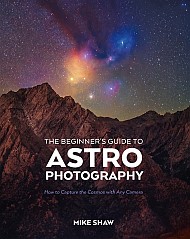Scientific American.com
Tom Zeller, Jr., on Migraine Research, Gender Bias and the Cultural Stigma of Headaches
Migraine and cluster headaches affect millions—yet research remains surprisingly thin.
Study Suggests COVID Pandemic May Have Aged Everyone’s Brain
Immunologist Zachary Rubin explains how, according to a recent study, living through a pandemic might accelerate brain aging.
Two Vaquita Calves Offer Flicker of Hope for Most Endangered Porpoises on Earth
The latest report shows that the estimated number of endangered vaquita porpoises has modestly increased
AI Decodes Visual Brain Activity—And Writes Captions for It
A noninvasive imaging technique can translate scenes in your head into sentences. It could help to reveal how the brain interprets the world
An Opera Explores the Story of Rosalind Franklin and the Discovery of DNA
Betrayal, ambition and the double helix: turning Rosalind Franklin’s story and the discovery of the structure of DNA into an opera
Ancient Roman Roads Mapped in Detail from Great Britain to North Africa
New findings increase the known length of the Roman Empire’s road network by more than 60,000 miles
Black Hole ‘Superflare’ Is the Strongest Ever Seen
A “superflare” 10 trillion times brighter than the sun is confirmed as the record holder for luminosity
Alarm Grows over Proposed Giant Mirrors in Orbit and Other Commercial Space Plans
Reflect Orbital’s plan to deliver “sunlight on demand” using thousands of giant orbital mirrors is just the latest in a growing list of disruptive commercial activities in space
Ozempic and Wegovy May Slow Alcohol Absorption and Intoxication
A small study helps explain why some people taking Wegovy and similar weight-loss drugs cut back on alcohol, offering insight into potential new addiction therapies


